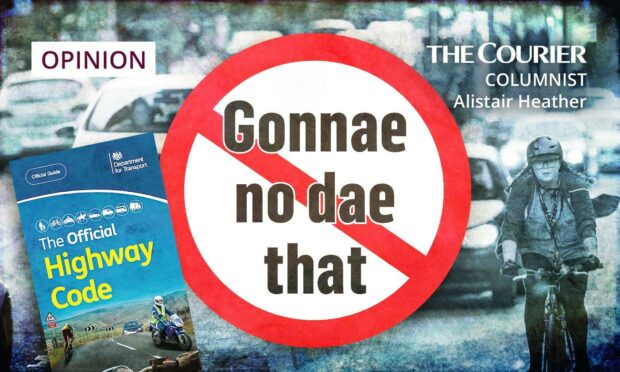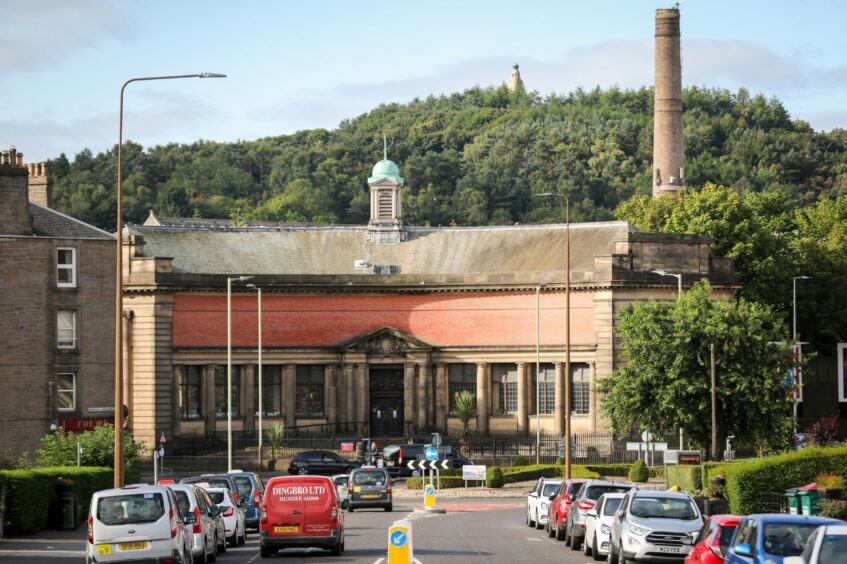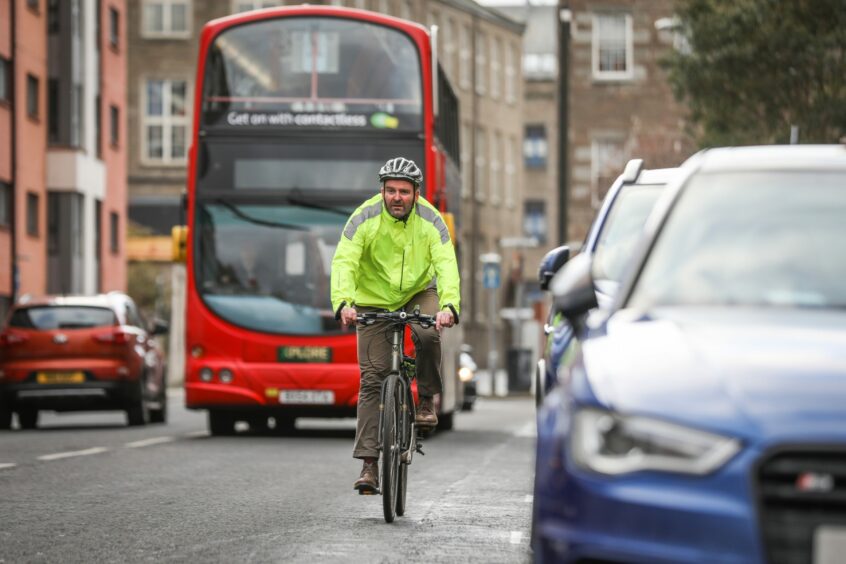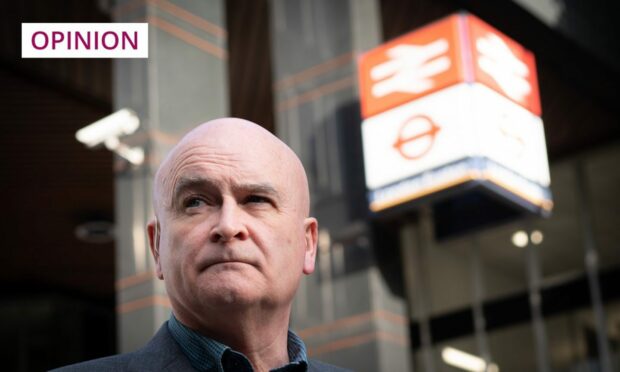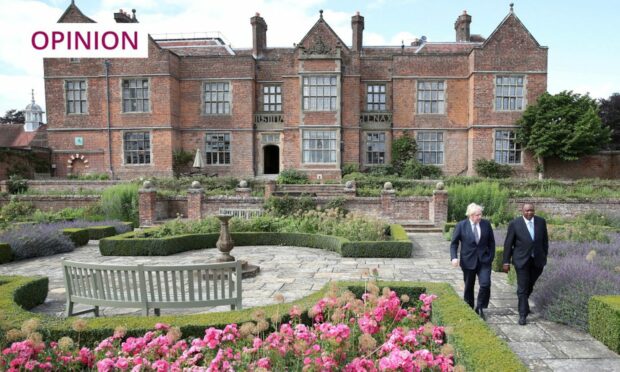Have you ever given yourself a wee Dutch Reach? You maybe won’t know what that is. It sounds vaguely sleazy, redolent of hazy nights in Amsterdam. Well, the refreshed Highway Code is demanding you have one whenever you park your car.
A Dutch Reach is, in fact, the act of stopping your car, winding down the window, and reaching out across your body with your left hand to open the car door using the outside handle.
This is now considered best practice for getting out your car.
The idea is you’ll be more aware of your surroundings, and therefore less likely to throw your car door open and skelp a passing cyclist.
On the ticht-packit streets of Dundee, this would of course be a welcome behavioural change.
And it also wilnae happen.
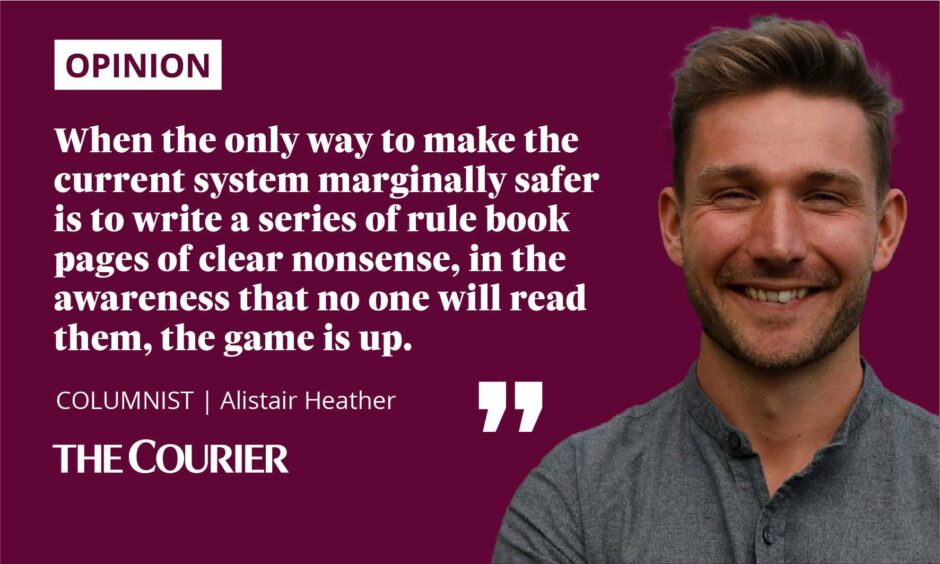
The Dutch Reach advice is part of a package of new rules and guidance drawn up by the Highway Code.
The changes are designed to make our roads a better shared space, particularly for cyclists, pedestrians and horse riders.
It is obscure, odd, and, like the rest of them, it won’t be adhered to, nor enforced.
There are other new rules.
Pedestrians crossing a side road have priority over cars turning off a main road into that side road.
But you’ll need a stout heart and a keen love of risk before you start stotting out in front of turning cars, praying the driver has read and digested the new Highway Code.
Cars crush the landscape of our towns
This breaks my heart a wee bit, because I would absolutely love to see a change in our streets.
There is so much ill health among my fellow townspeople that would be improved at a stroke if we replaced short car journeys with walking or cycling.
Remember kids, the new Highway Code rules start today. 🤣 pic.twitter.com/95h4AvYFMc
— John (@heidcamUK) January 29, 2022
Cars are an outdated technology. We are ready to evolve beyond them now and they crush the landscape of our town.
My area of Coldside is a particularly bad case.
Built to house factory workers a century and more ago, this was an area where cycling was expected, and walking was the norm.
Now, prams, wheelchairs and pedestrians are completely blocked from walking down pavements by lines of parked cars.
More cars blockade the sides of the road, with the live traffic squeezing down the narrow remaining channel like blood struggling through a fatty artery.
The air honks of diesel fumes. Thousands of people around here end up in hospital, many dying, because of the poisons chucked out by cars.
With pavements, roads, junctions all overwhelmed with traffic, incidents happen often.
Children heading to school are at massive risk.
Tragically, young people are killed, or disabled permanently, by normal drivers like me and you all the time in Dundee, Angus, Fife.
Don’t blame drivers, blame the system
This system really is broken. The new Highway Code changes make that absolutely clear.
But when the only way to make the current system marginally safer is to write a series of rule book pages of clear nonsense, in the awareness that no one will read them, the game is up.
I have anger towards these new finicky changes to the code because they make a central error. It is still individual drivers who are still being blamed for these impacts.
The Highway Code says: “Those in charge of vehicles that can cause the greatest harm in the event of a collision bear the greatest responsibility to take care and reduce the danger they pose to others.”
Most of us don’t drive cars round these dangerous streets by choice. We do it because it is the only safe and efficient way to move across town.
The city is designed for cars, not for bikes or pedestrians.
When I did cycle here it was fearfully, with lines of traffic growling at my back, my eyes scanning all the parked cars for a door being flung open into me, or kids stepping out into traffic.
When I walk, there are so few crossings that I seldom use them, instead taking my life in my hands darting across through gaps in traffic.
In my car I can roar straight doon the Hill, slingshot round Dudhope circle and park literally right outside the Overgate on the street.
It is unbelievably safe, convenient and fast.
Highway Code changes fall far short
Driving in a city designed for cars is not a choice, its an inevitable response to our environment.
One day we’ll get sick of the fumes ruining our health.
One day we’ll connect our handy car parked outside with the damaged kids hospitalised after a crash.
And maybe one day we’ll be glad to move beyond our hyper reliance on cars to a mix of bikes, walking, buses, trains, e-scooters, whatever.
But for now, the slightly revised Highway Code won’t be worth the paper it’s printed on.
While Dundee remains the domain of the car, I might just Dutch Reach out the window and throw it in the gutter.
